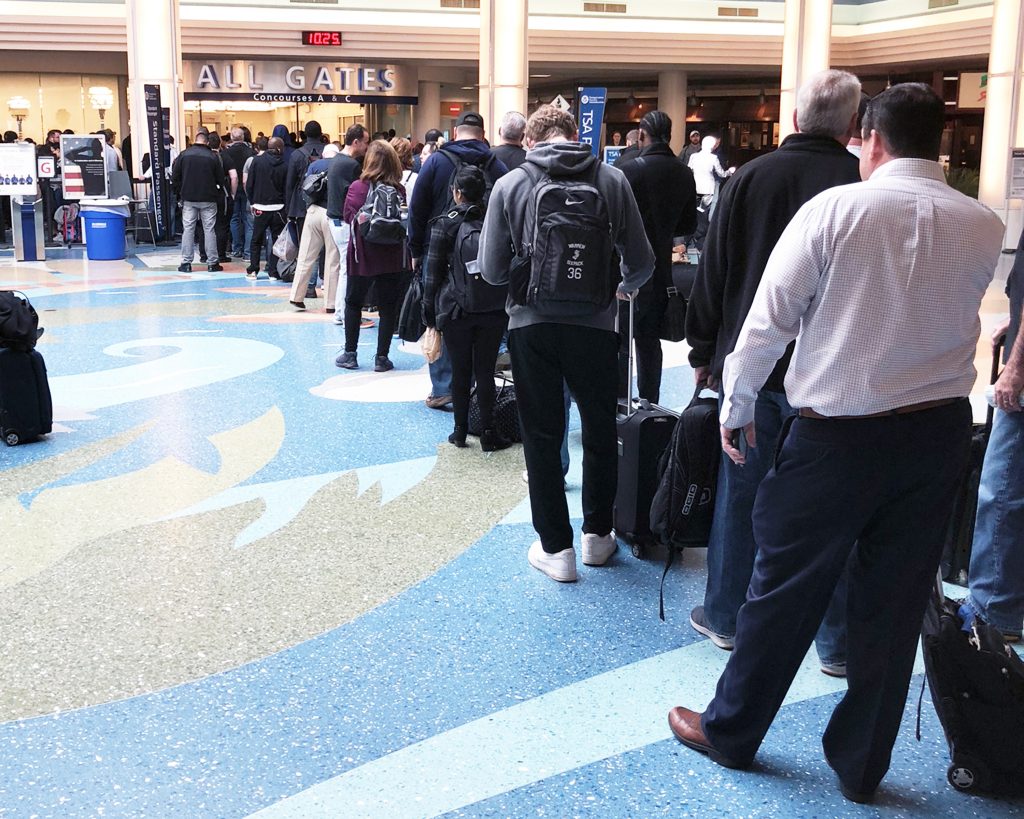This article is an excerpt from GovLoop’s recent guide, “Emerging Tech in Government: What It Means for Your Career.” Download the full guide here.
Biometrics is the measurement of physiological characteristics such as fingerprints, iris patterns or facial features that can be used to identify an individual. Biometrics help secure facilities, protect access to computer networks, counter fraud, screen people at U.S. borders and fight crime.
“For the majority of the public, biometrics remains a technology they are more familiar with due to science fiction movies than practical experience. This lack of familiarity impacts perceptions of both the technology and its application by government agencies.” — “Biometrics in Government Post-9/11”
We’ve compiled several case studies that show how biometrics have begun to impact the public sector.
Continuously Authenticating Employees on Workplace Computers
The Defense Department is evaluating behavioral biometrics software that can uniquely identify people by the way they use government computing devices, such as laptops, desktops and servers.
After 20 minutes of tracking a user’s keystroke style and speed, mouse use, and other behaviors, the software builds a biometric profile of that user, according to a news release. A continuous authentication algorithm enables the platform to know who is on the network, when, and where they are located. The hope is these capabilities will enable the department to detect intruders in real time.
DoD’s Defense Innovation Unit — Experimental, which identifies emerging commercial technologies for the department’s use, is spearheading evaluation of the solution. The plan is to strengthen the department’s information security by integrating several multifactor authentication technologies, including behavioral biometrics software.
Part of that plan includes augmenting or replacing the Common Access Card or username/password forms of authentication that employees currently use to access government buildings and systems.
Confirming the Identity of Airline Travelers
A U.S. Customs and Border Protection (CBP) program that uses facial recognition technology to verify travelers’ identities as they leave the country is now being demonstrated at eight U.S. airports.
“In June 2016, CBP launched its first facial biometric demonstration at Hartsfield-Jackson Atlanta International Airport for biometric exit in partnership with an airline,” according to the agency. “Based on the Atlanta success, CBP has now expanded this demonstration and developed a robust cloud-based service called the Traveler Verification Service (TVS). CBP is implementing capability demonstrations of the TVS at several additional airports.”
Under CBP’s Biometric Air Exit project, either the agency or airline partners will photograph passengers as they board international flights in the United States. “The purpose is to confirm that each passenger is the true bearer of the travel document required for travel,” CBP said. “In addition, for non-U.S. citizens, the photograph will be used as biometric confirmation of departure from the United States, as required by law.”
Privacy advocacy groups and think tanks have used CBP information-sharing sessions and other means to vent their concerns about the “privacy-invasive commercial technology” scanning Americans and the system’s legal and technical problems.
In addition to Hartsfield-Jackson, the program is also being demonstrated at Washington’s Dulles International Airport, Houston’s George Bush Intercontinental and William P. Hobby airports, Chicago’s O’Hare International Airport, Las Vegas’ McCarran International Airport, New York’s John F. Kennedy International Airport, and Miami International Airport.
Improving the Security of Biometric Security Systems
The Intelligence Advanced Research Projects Activity launched a multiyear research effort to develop and evaluate technologies that ensure the integrity of biometric security systems.
The Odin program, which launched in 2017, will focus specifically on detecting known and unknown presentation attacks, or spoofs, lodged against systems that collect face, finger and iris biometrics to disguise a person’s true identity.
If the Odin program proves successful, it will provide solutions to the Intelligence Community and its partners that can resolve critical vulnerabilities in today’s biometric systems, according to the Office of the Director of National Intelligence (ODNI).
“Within Odin, a component named Thor will develop new algorithms, sensors, and technologies to identify presentation attacks,” ODNI said. “John Hopkins University Applied Physics Lab and National Institute of Standards and Technology will work together to independently test the new systems — drawing on thousands of volunteers to try them out and learn how well they work.”
Biometrics by the numbers
- DHS’ Automated Biometric Identification System, or IDENT, holds more than 200 million unique identities and processes more than 300,000 biometric transactions per day.
- According to Technavio’s latest research study, the biometrics market in North America is expected to reach more than $8 billion in revenue by 2020.
